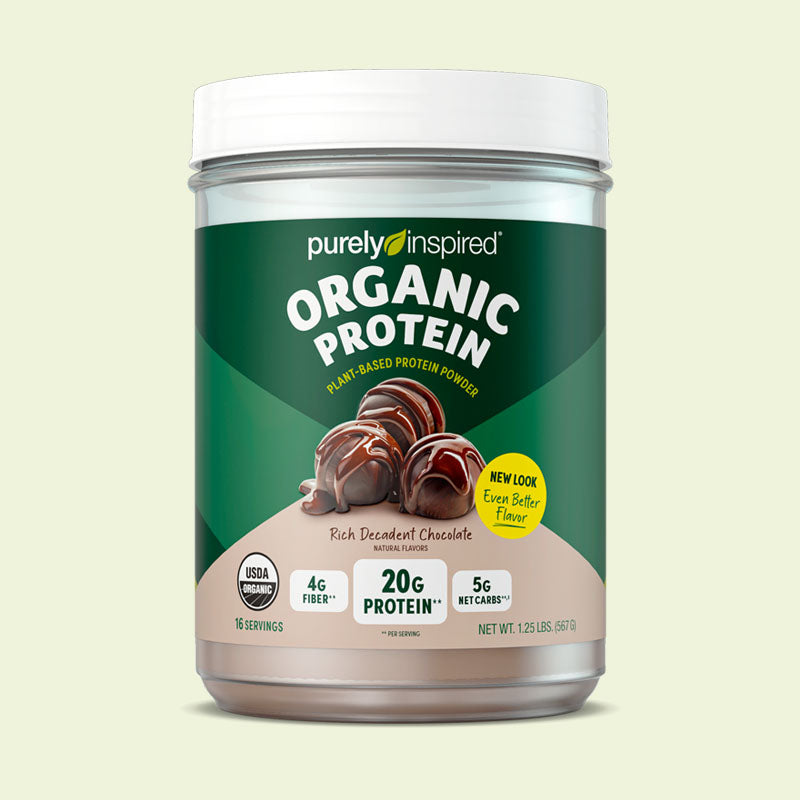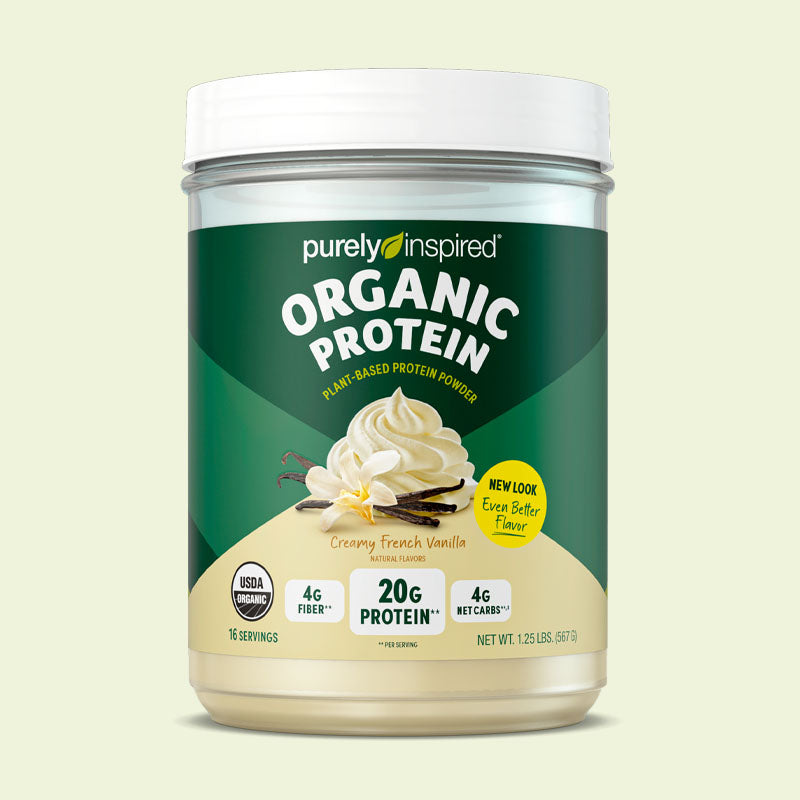While the guidelines recommend that adults should spend at least two and half hours each week doing moderate-intensity aerobic exercise, plus muscle-strengthening activities of moderate (or greater) intensity at least twice per week, the main goal is simply for everyone to move more and sit less throughout the day.
That’s because regular exercise can help us take advantage of a number of health benefits, including helping to prevent excess weight gain (or to maintain weight loss), combating health conditions and diseases, promoting better sleep, improving our mood, and boosting our energy. So, if you’re someone who has always wanted to exercise more, but weren’t sure where to start, we’ve got you covered with seven beginner exercises to try at home that don’t require anything but your own bodyweight.
The Best Beginner Exercises To Do During Home Workouts
To maximize the benefits of your home workout in the shortest amount of time possible, we’re going to focus on stretching, aerobics, muscle-strengthening, and balance exercises. Stretching will help you maintain flexibility, aerobic exercise will give your heart and lungs a workout and increase your endurance, strength training will help you build back the muscle mass that we all lose as we age, and balance exercises will make you steadier on your feet and help to prevent falls. We’re also going to focus only on basic bodyweight moves so you don’t have to purchase any gym equipment.
So, for all of you who have been wondering, how can you do simple exercises at home? Here are seven easy exercises (no equipment required!) that you can do during your home workout session. We promise it won’t take you more than 10 to 15 minutes total!
7 Easy At-Home Exercises For Beginners
1. Marching In Place
Warm up exercises will prepare your body for the workout that’s about to come. Marching in place is an aerobic exercise that will loosen up your muscles and get your heart rate going. That’s why marching in place is the perfect exercise to kick off your at-home workout session.
To march in place, stand tall with your feet together and your arms at your sides. Then bend your elbows and swing your arms as you lift your knees. Continue marching in place for a minute, while looking straight ahead. As you march, keep your abs tight, breathe comfortably, and don’t clench your fists (keep them soft).
If you’d like to make this exercise easier, march slower and don’t lift your knees as high. However, if you’d like to make this exercise more challenging, lift your knees higher, march faster, and really pump your arms. Just remember to pace yourself since this is only the first exercise.
2. Jumping Jacks
Jumping jacks are a full body workout that can strengthen your bones and improve your cardiovascular fitness and heart health. This plyometric exercise (explosive aerobic moves that increase speed, quickness, and power) is great for your health since it combines cardiovascular conditioning with strength work.
You’ve probably done jumping jacks at some point in your life (like during gym class), but the only way to gain health benefits from jumping jacks is to do them with proper form. So, stand up straight with your legs together and your arms down at your sides. Then bend your knees slightly and jump. As you jump, spread your legs about shoulder-width apart and stretch your arms out and over your head so that they almost touch. Jump again and return your arms and legs to the starting position. Do two sets of 10 jumping jacks. You can increase the number of sets and jumping jacks once you gain more strength and stamina.
3. Bodyweight Squats
Bodyweight squats offer a number of specific benefits to your body, including strengthening the muscles in your legs (quadriceps, calves, and hamstrings), strengthening your knee joint, burning fat and promoting weight loss, strengthening your lower back, and improving flexibility in your lower back. It’s also a very practical exercise with everyday benefits since you squat every time you sit or stand.
Proper bodyweight squat form is crucial since when done incorrectly, squats can be hard on your knees. To start, stand with your feet shoulder-width apart and your toes pointing slightly outward. Your arms should be straight out in front of you. Bend your knees to push your hips backward, while keeping your back straight and your torso upright (like you’re sitting back in a chair). Once your knees reach a 90-degree angle or lower, push back up through your feet, while using the muscles in your hips and thighs, to straighten your legs. Perform this exercise for one minute (or as long as you can go).
4. Knee Push-Ups
Before you say: Oh, no! Not push-ups! I can’t do those! Knee push-ups are a beginner style push-up that will help you build strength before you even attempt to do a standard push-up. Knee push-ups are a strength training exercise that can improve your upper body strength and increase your core stability. Knee push-ups also activate muscle groups through your upper body, including your triceps, pecs, and shoulders, and require you to keep your core activated throughout the full range of motion, as well.
To do knee push-ups, get into a high plank position from your knees with your hands shoulder-width apart under your shoulders. While maintaining a straight line from your head to your knees, bend your elbows to lower yourself down to the ground. Your elbows should be 45-degrees away from your body, and your wrists should be under your elbows. Make sure to engage your glutes and your core as you bend your elbows and lower your body closer to the floor. Pause at the bottom of the movement and then push back up to the starting position. Do two sets of 10 knee push-ups. You can increase both the number of sets and knee push-ups that you do once you gain more strength, or you can even give standard push-ups a shot.
5. Bird Dog
The bird dog is a simple core exercise that improves balance and stability. This exercise also promotes proper posture, encourages a neutral spine, increases your range of motion, and relieves low back pain. And it will strengthen your core, hips, and back muscles, too.
To do the bird dog exercise, start by getting on all fours in the tabletop position. Place your knees under your hips and your hands under your shoulders. Maintain a neutral spine by engaging your abdominal muscles. Then draw your shoulder blades together. Next, raise your right arm and left leg, while keeping your shoulders and hips parallel to the floor. Lengthen the back of your neck and tuck your chin into your chest to gaze down at the floor. Hold this position for a few seconds, then lower back down to the starting position. Next, raise your left arm and right leg, holding this position for a few seconds. Then return to the starting position. This is one round. Do two sets of eight repetitions, increasing the number of sets and repetitions as you get more comfortable doing the bird dog exercise.
You can either do the bird dog exercise on the floor or on an exercise mat. However, if you’re doing the bird dog on the floor, you might want to place a flat cushion or a folded towel under your knees. You can also use a mirror to check your alignment while you do the bird dog.
6. Standing Knee Lifts
Balance exercises usually involve standing on one foot or walking heel to toe, with either your eyes open or closed. Standing knee lifts are a balance exercise that incorporates standing on one foot with your eyes open.
To do a standing knee lift, begin by standing up straight with your feet together and your hands on your hips. Then lift your left knee toward the ceiling as high as is comfortable, or until your thigh is parallel to the floor. Hold, then slowly lower your knee back to the starting position. Repeat this exercise five times. Then perform the exercise five more times with your right leg.
7. Lunging Hip Flexor Stretch
If you want to maintain (and possibly even boost) your flexibility, reduce your risk of injury, decrease muscle tension in your body, and improve your performance the next time that you work out, make sure to stretch at the end of every workout session.
Some areas of your body that you should target through static stretching (holding a stretch position for up to 60 seconds) at the end of your workout are your calves, hamstrings, quadriceps, hip flexors, and the muscles of your shoulders, neck, and lower back. The lunging hip flexor stretch is a great static stretch that targets the muscles in your hips, quads, and glutes.
To do the lunging hip flexor stretch, kneel down on your left knee. Keep your right knee bent, with your right foot flat on the floor in front of you. Lean forward and stretch your left hip out toward the floor. Hold this stretch for 30 to 60 seconds before switching legs and doing the opposite.
As a general rule of thumb, always begin your workout with a quick warm up that includes dynamic stretches (like marching in place) and then finish off your exercise session by performing static stretches when your muscles are more relaxed.
*The links used in this article are being provided as a convenience and for informational purposes only; they do not constitute an endorsement or an approval by Iovate Health Sciences International Inc. or any of its affiliates (“Iovate”) of any of the products, services or opinions of the corporation or organization or individual. Iovate bears no responsibility for the accuracy, legality or content of the external site or for that of subsequent links. Contact the external site for answers to questions regarding its content.







